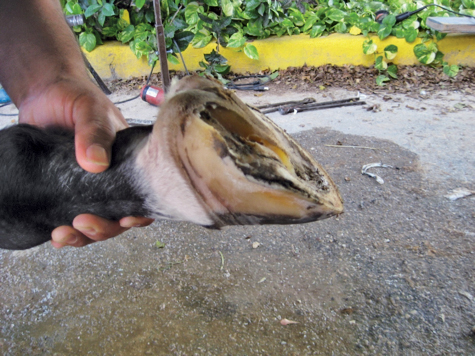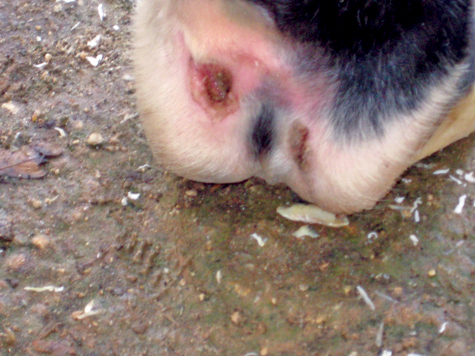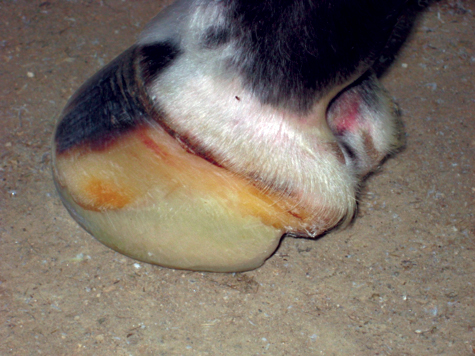Tom Curl often sees racehorses with a type of wall separation that he refers to as a whole heel blowout.
“Their heels sit very undershot,” says the veteran farrier from Vero Beach, Fla. “The walls sometimes sit an inch in front of their bulbs and on racehorses, you can’t always run that shoe back that far, regardless of whether you’re gluing or nailing. This is a major concern if you’re gluing on the shoe because the hooves won’t take the pressure of the glue at the top of the hoof capsule.

The severe abscess in this horse's hoof ran all the way under the frog to the back of the pastern, where it broke out. The entire bar was lost to infection.

“It’s tough to nail a shoe on a horse like this, but when the owner wants the horse out on the track tomorrow, you do what you can. When a horse loses a week on the track, it takes him 3 weeks to get back up to the fitness level to go again. Time is of the essence.”
Through trial and error, Curl has settled on gluing shoes as closely as possible to where the heel ends. The key is to try to give the horse a new foundation at the back of the hoof.

Compromised for 18 months, the horse's frog sat below the hoof's ground surface.

The heel was built up for a glued-on shoe. Extending the shoe back to the bulb in order to get a nicer angle doesn't work well with most racehorses.
Curl says some farriers would apply a spider bar plate with cases like this one.
“Some horses can survive with that — just jumping over the whole heel,” he says. “But this guy was very touchy and the rest of his foot skidded under him, so he needed the foundation and heel support.”






